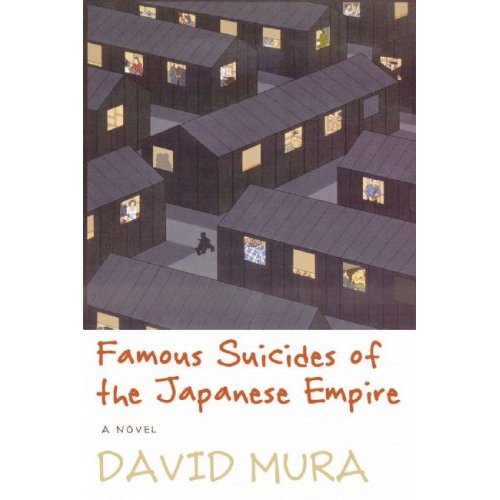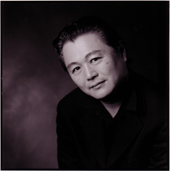LITERATURE: Mining for Hidden Histories
Shannon Gibney looks at David Mura's new novel "Famous Suicides of the Japanese Empire," which mines oft untold personal histories of Japanese-Americans in WWII for subsequent generations struggling to carve out an authentic cultural identity.


ALTHOUGH SOME HISTORIES ARE OUT IN THE OPEN easy, accessible, and widely accepted most are like those that author David Mura wrestles with, which usually stay hidden within the steadfast silences of tight-lipped family members and neighbors, invisible to (or effectively erased by) historians compiling the erudite texts that line the walls of our libraries and sacred institutions. In his memoirs and books of poetry, Mura has stubbornly pulled recalcitrant stories like these into the public eye; specifically he’s worked to bring the personal histories of Japanese Americans in WWII and its aftermath onto the page. In his most recent work, he approaches the topic from a new vantage pointthe novel. Famous Suicides of the Japanese Empire, just released by Coffee House Press this month, explores the psychological effects of resisting the draft as experienced by one fictional Japanese-American family, the Oharas.
There are two brothers in the book, explains Mura. One brother (the narrator, Ben) went to grad school in history but never finished his Ph.D.; he looks at himself as an academic failure. Bens younger brother Tommy becomes a brilliant astrophysicist; he has problems with drugs, gambling, and women. The father, at a certain point in their childhood, commits suicide. The mother goes on to marry a haijin, a white man, and is dedicated to leaving the past behind and assimilating to a white middle-class existence. In many ways, she is in denial about what happened with her husband, and the effect of all of that on their children.
Famous Suicides of the Japanese Empire weaves through the Ohara brothers childhood in Chicago, into their fathers suicide, past Tommys disappearance into the Nevada desert and, finally, to their mothers death years later. Ben’s efforts to reconcile himself to his family’s checkered history are reflected in a text-within-the-text, his unfinished dissertation, which bears the name of the novel, itself. My title and subject betray my long fascination with the origins of my familys grief and madness, Ben tells the reader, in a revealing passage. Under Western eyes, grief and madness are popularly associated with the Japanese samurai seppuku, kamikaze pilots, the author Yukio Mishima, even Madame Butterfly. As for my tribe of Japanese Americans–well, compared to the honto Nihonjin, were rather obscure creatures. So obscure even some of our own cant quite admit that we exist.
This erasure of existence and identity plagues Ben throughout his childhood, and beyond. Since no one talks to him about Japanese-American history and culture, he is left to discern what it is from what it is not: It is not Midwestern middle-class White culture. It is not the culture of Japanese warriors from the days of old, whose sworn allegiance was to the Emperor. But the negative space of identity never compensates for identity itself. Perhaps that is why Ben and his brother often find themselves at the center of difficult interactions which they do not understand, like this one, with a teacher in reform school, when Ben is a teenager:
I got up with the others to go on to the next class, but he called me back.
Mr. Ohara, you are Japanese, are you not?
Japanese American.
Yes. He seemed to think a bit. I know why you are so angry.
What was he talking about. My fight with Slade? Did he know what happened to suck-ups?
What they did to your people. It was a dirty shame. We Irish know something about that. Unfair treatment.
Thank you sir. I didnt know what else to say. I still didnt get his point.
_________________________________________________
David Mura wrestles with personal histories which usually stay hidden within the steadfast silences of tight-lipped family members and neighbors, invisible to (or effectively erased by) historians compiling the erudite texts that line the walls of libraries. Famous Suicides stubbornly pulls these recalcitrant stories onto the page and into the public eye.
_________________________________________________
For Mura best known as a poet and memoirist the process of writing Famous Suicides was not just about an urge to write fiction, it was also about creating a new framework in which a whole cultural experience could exist. He reflects, Im writing about what it means to be a third-generation Japanese-American, whose parents were interned but never spoke about that experience. So there was nothing in the way that my parents talked about who we were or are that explained to me how the internment camp experience affected their lives and, therefore, my own sense of myself. Nor was there anything in the greater culture which explored that. In a way, I had to write two memoirs to create the cultural, intellectual, and psychological apparatus to contextualize my own experience. Whereas, I think, for certain other writers, that internal, cultural, and psychological apparatus is already available within the greater culture.
But Famous Suicides is not just a work of one, solo literary imagination; the story is written in the tradition of and, in a way, as an homage to novelist John Okada. One of the ways that my novel fits in with Asian-American literature is that you have the precedent before it of No-No Boy [University of Washington Press, 1978], John Okadas great book about a No-No Boy [those men who refused to swear allegiance to the U.S. government or to fight in the war]. In many ways, his is still an unprecedented work within the field of Asian-American literaturefor its rawness, its bitterness, and the depth of the psychological pain it explores, a pain which obviously comes out of a historical, political situation. For me,” Mura explains, “as for a number of Asian-American authors, reading Okadas book was a formative experience.
He adds, I was interested in the whole way that No-No Boys, the Japanese-American draft resisters, had been considered by the Japanese-American community after the war to be the black sheep, while the men who served in the armed forces, such as the 442 (the most decorated battalion in Europe), were considered the heroes, emblematic of who the community was. I wanted to explore, then, what the effect of that shunning might have been on one particular family.
Mura addresses that sort of alienation and ostracism patiently throughout Famous Suicides, though he never lingers so long on any scene or meditation that it obscures his deeper purpose: to mine his characters’ lives for buried histories and, then, to get those stories told.
What: David Mura reads from Famous Suicides of the Japanese Empire
Where: Magers and Quinn Booksellers in Minneapolis
When: Thursday, September 25, 7:30 pm
Admission is FREE and open to the public
About the writer: Shannon Gibney is a writer who lives in Minneapolis.